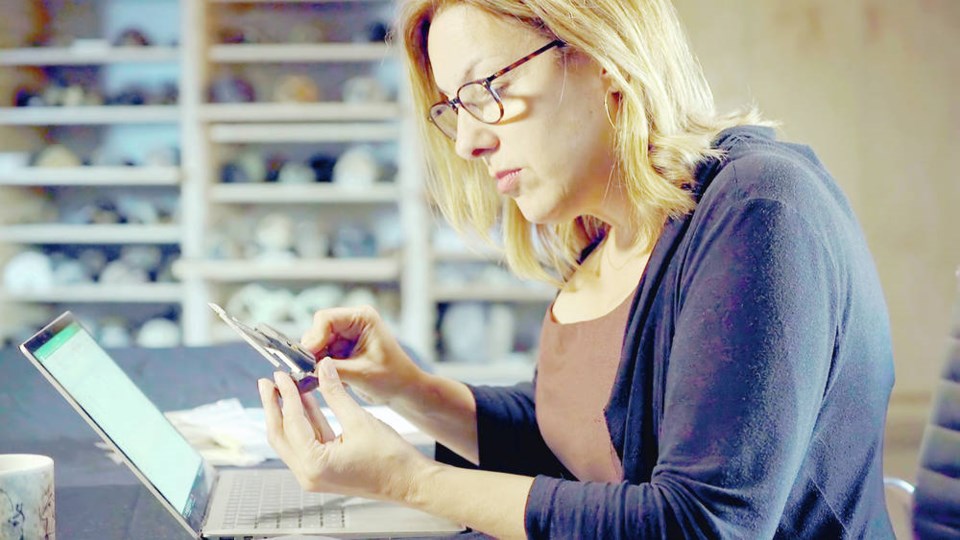ON SCREEN
What: The Real Neanderthal
Where: CBC’s The Nature of Things (also streaming at )
When: Friday Feb. 19, 9 p.m.
For a species known to lead diverse, fulfilling lives, Neanderthals sure have been a given a bad rap in popular culture.
CBC’s The Nature of Things is hoping to change their reputation as plodding, slow-footed cavemen with help from two anthropologists from the University of Victoria.
The Real Neanderthal, which airs Friday at 9 p.m., brings new anthropological evidence to the table during an hour-long episode, including new developments with a spear and cave in France.
April Nowell, chair of the University of Victoria’s department of anthropology, and UVic anthropologist Genevieve von Petzinger are key in the episode, but want to keep the surprises a secret.
“There’s some really interesting stories to do with Neanderthals that I’ve never seen done anywhere else before,” von Petzinger said. “They managed to get into a site that is very, very difficult to get into. Very few people will have the opportunity to see inside of this cave.”
Nowell is a Paleolithic archaeologist whose research focuses on the origins of modern human cognition and behaviour and Neanderthal lifeways, while von Petzinger specializes in prehistoric communication code, including Ice Age caves. Both are on board with The Real Neanderthal’s attempts to change public perceptions of Neanderthals as heavy-browed dunces.
The study of Neanderthals is a relatively new pursuit; the first fossils were not discovered until the mid-19th century. But public affinity for these plucky people was immediate.
The Neanderthal journey passed by in the blink of an eye, compared to six million years of human evolution, but their might was admirable, Nowell said. “They had to have been very intelligent to adapt to all these conditions, and to deal with the influx of modern humans bringing different kinds of diseases.”
Cavemen, to use a colloquialism, have been a constant source of fascination and targets of a stream of misinformation for decades, from comic strips (The Far Side; sa���ʴ�ý) and animated features (The Croods) to feature-length films (Quest For Fire) and novels (Clan of the Cave Bear). The prehistoric cousins of Homo sapiens have been unfairly portrayed in popular culture, which has made the sub-species something of a punchline.
Their medical practices were advanced, and their communication, via geometric cave drawings, had groundbreaking components.
“They were thoughtful, in a way,” von Petzinger said. “Everything the documentary touches on shows the very different aspects of a modern mind.”
Neanderthals were closely aligned with humans, studies have shown. But while research has shown the differences are not as pronounced as once thought, the prevailing sentiment that Neanderthals were savages whereas Homo sapiens are clever has been hard to shake.
The Real Neanderthal shows Dutch paleo-artists Adrie Kennis and Alfons Kennis painstakingly creating lifelike sculptures of a Neanderthal father and daughter, which gives viewers a humanistic, tangible perspective of the otherwise misunderstood species, according to Nowell.
“It really doesn’t matter how many spectacular finds there are. People still revert to that idea of the caveman with the club.
“With no other human ancestors do people have such strong emotional beliefs about how they lived.”
Nowell knows a thing or two about spectacular finds. For more than 20 years, she has led a research team from UVic and partner universities from the United States, Australia and Germany in the excavation of a site near Azraq, Jordan.
Four years ago, they unearthed 7,000 stone tools used more than 250,000 years ago, with the blood residue of animals intact.
That type of discovery is what keeps paleoanthropologists and paleolithic archaeologists continually searching for new developments in the field, she said.
A relatively new species that only came into existence roughly 350,000 years ago, Neanderthals remain our closest relatives; they share almost all of their DNA with humans. Their population would have eventually been fully meshed into ours, Nowell said, had they not been bred out of the evolutionary chain 40,000 years ago.
“We’re still learning about what kind of differences there were. They were never going to be modern humans; they were on their own evolutionary trajectory. We last shared a common ancestor with them 550,000 years ago, so we’ve had a long, separate history. But if there hadn’t been a perfect storm of climate and competition and disease, they might have continued for quite a bit longer.”
The lines will grow increasingly more blurred as science and technology continues to advance, Von Petzinger said. “We are dealing with a much more nuanced person, who is different yet very similar to us. A lot of it has to do with our own prejudices, which held us back from being able to see that.”



